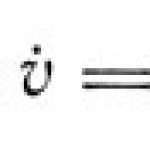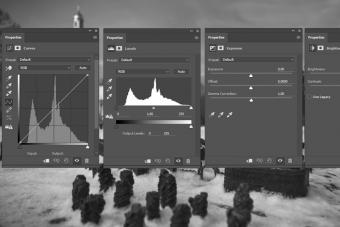By the level of blood oxygen saturation, one can judge the metabolism in tissues and the function of the main organ systems. To measure this indicator, a non-invasive method of pulse oximetry is also used.
The principle of operation of pulse oximetry and the method of conducting pulse oximetry using a sensor - what is the difference between the transmission method and the reflected one
- a method for determining the amount of oxygen associated with hemoglobin in arterial blood. Up to four oxygen molecules can attach to each hemoglobin molecule. The average percentage of saturation of hemoglobin molecules is the oxygen saturation of the blood. 100% saturation means that each hemoglobin molecule in the studied volume of blood carries four oxygen molecules.
How a pulse oximeter works is based on the differentiated absorption of light with different wavelengths by hemoglobin, depending on the degree of oxygen saturation.
The pulse oximeter consists of a light source of two wavelengths (660 nm "red" and 940 nm "infrared"), a photodetector, a processor, and a monitor.

Pulse oximeter software Allows the device to extract the pulse volume of blood (arterial component).
Most models provide audio and graphic representation of the degree of oxygen saturation. It takes 5-20 seconds to calculate the saturation.
There are two types of pulse oximetry:
- Transmission.
For analysis, a light wave is used that passes through the tissues of the body. The emitting and receiving sensors are located opposite each other. For research, the light source and the photodetector are fixed on the finger, earlobe, wing of the nose.
- reflected.
The reflected light wave is used for analysis. The emitting and receiving sensors are located side by side. The device can measure oxygen saturation in different parts of the body (forearm, face, lower leg, abdomen, etc.).
The main advantage of reflected pulse oximetry is its ease of use. The part of the body for attaching the sensors is selected depending on the patient's condition, the presence of a forced position of the body. The accuracy of reflected and transmission pulsometry is approximately the same.
When to do computerized pulse oximetry - indications
Applications of pulse oximetry:

The decision on the need for research is made by the attending physician.
Main indications for pulse oximetry:
- Respiratory failure (including probable).
- oxygen therapy.
- Postoperative period (after restoration of the vascular wall, orthopedic operations, interventions on the distal parts of the body).
- Severe chronic diseases accompanied by a high risk of hypoxia.
- Suspicion of obstructive sleep apnea syndrome, central sleep apnea syndrome and chronic nocturnal hypoxemia.
How is pulse oximetry done at night?
Pulse oximetry at night indicated for suspected sleep disturbances. Such disorders are likely in patients with II-III degree obesity, diabetes mellitus, hypothyroidism, as well as in metabolic syndrome, arterial hypertension.
Symptoms of disturbed breathing during sleep are often snoring, arrhythmia, nocturia, daytime sleepiness, headaches and weakness in the morning, gastroesophageal reflux at night.
 Pulse oximetry at night is a long-term monitoring of oxygen saturation, pulse rate, pulse wave amplitude. During sleep, the pulse oximeter records indicators 10-30 thousand times. The data is processed by software and stored in the instrument's memory.
Pulse oximetry at night is a long-term monitoring of oxygen saturation, pulse rate, pulse wave amplitude. During sleep, the pulse oximeter records indicators 10-30 thousand times. The data is processed by software and stored in the instrument's memory.
For the study, a portable device is used. Night sleep can be monitored both at home and in a medical facility.
Principles of diagnostic research:
- Regular research hours are 22.00-8.00.
- In the sleeping room, the normal temperature regime (18-25 degrees Celsius) should be observed.
- Avoid sleeping pills and caffeine before nighttime pulse oximetry.
- The patient is given a "study diary" form to record the time of awakening, medication, headache, etc.
Night pulse oximetry algorithm:
- A receiving unit with a microprocessor is fixed on the left wrist, and a device sensor on one of the fingers of the left hand.
- After installing the sensor, the device automatically turns on, the values of the indicators appear on the display of the receiving unit.
- Further, the patient does not remove the sensor from the phalanx of the finger throughout the night. All night awakenings are recorded in the “research diary”.
- After waking up in the morning, the patient removes the transducer and the receiving unit, passes the "study diary" to the doctor.
Basic indicators and norms of pulse oximetry
Pulse oximetry measures arterial hemoglobin saturation with oxygen and pulse rate (heart rate).
 Norma arterial hemoglobin saturation with oxygen say 95-98%. Higher numbers may be with oxygen therapy. Values below 95% indicate hypoxia.
Norma arterial hemoglobin saturation with oxygen say 95-98%. Higher numbers may be with oxygen therapy. Values below 95% indicate hypoxia.
In pediatric practice, saturation values above 95% are most often considered the norm.
Pulse rate at rest in adults should normally be 60-90 per minute.
In children, this indicator is assessed according to the age norm (the younger the child, the higher the pulse rate).
Where can I get high-quality computer pulse oximetry?
In Moscow, pulse oximetry can be done in several institutions, including:

Night pulse oximetry is performed in:
- Sleep Laboratories on the basis of the Department of Systemic Hypertension of the Institute of Clinical Cardiology. A. L. Myasnikova Federal State Budgetary Institution "Russian Cardiological Research and Production Complex".
- Department of Sleep Medicine, Federal State Budgetary Institution Clinical Sanatorium "Barvikha".
- Children's consultative and diagnostic center.
- Consultative and diagnostic center "Arbatsky".
Pulse oximetry price:
- The minimum pulse oximetry costs from 100 rubles (Southern Clinic).
- Computer monitoring costs from 1500 rubles (FGBU Clinical Hospital).
- Night pulse oximetry will cost at least 2,500 rubles (Children's Consultative and Diagnostic Center, Arbatsky Consultative and Diagnostic Center).
In most major cities, pulse oximetry is available in private and public hospitals. You can find out exactly where to undergo the study from your doctor.
While we are young and full of energy, we don’t really want to think about our own health: we attribute any slight ailment to lack of sleep, as well as constant employment and fatigue. Only over time, when the body cannot withstand such a pace and begins to declare itself more loudly and persistently, do we understand that something needs to be done about it.
Not everyone knows that sometimes diseases appear and develop imperceptibly, and the cause may be poor blood oxygen saturation, or saturation.
It is rare that anyone thinks about and controls this parameter, but its poor performance can witness the development of dangerous and very serious diseases: the development of diabetes, the appearance of blood clots, a general violation of blood circulation, disorders in the heart and nervous system.
The first signs of an insufficient level of saturation are frequent headaches, dizziness, fainting, decreased concentration and brain function.
Naturally, with such signs of malaise, the quality of life is significantly reduced, such symptoms interfere with fruitful work and rest, enjoy hobbies and the usual course of life, because at any moment, a sick person may need medical help. How to avoid such problems?
It's simple: you need to take care of your health from a young age, and a special device, a useful novelty in the field of medical devices, a pulse oximeter, is excellent for measuring the level of oxygen in the blood. This small device, which was designed to quickly measure oxygen levels, should be in the pocket of anyone with these health problems.
What is it and what is it used for?
With the help of this modern diagnostic device, you can literally determine the amount of oxygen in arterial blood, as well as the heart rate, in just 2-3 seconds.
More complex variations of devices may contain an additional number of functions, but the basic meaning remains unchanged: it determines the number of molecules to which oxygen molecules should have joined. It is believed that the blood is saturated with oxygen if 4 oxygen molecules are attached to each hemoglobin molecule. These readings are usually calculated as a percentage and displayed on the screen, the rate is 95-100%.

Such devices are widely used by therapists, their indicators are important for making more accurate diagnoses, in addition, they are popular among athletes and all those who are fond of heavy loads in sports.
With the help of a pulse oximeter, it is convenient to monitor the general condition of the body during training, which makes it more efficient and productive.
Such devices are actively used to analyze the functioning of the human respiratory system, for a general study of the functioning of the lungs, as well as for the diagnosis of diseases such as tuberculosis, sarcoidosis, chronic lung disease, and many others.
Also, a pulse oximeter is used during anesthesia, to carefully monitor newborn babies who were born as a result of difficult childbirth.
Operating principle
Such, at first glance, a simple and small device, as it turned out, has a rather complicated principle of operation. In a nutshell, a pulse oximeter consists of several main parts: a sensor with LEDs (two different waves - infrared and red), a microprocessor and a display.

The sensors are configured in a special way, in the process of turning on the device, they emit light that passes through the tissues and is absorbed by the blood. The degree of absorption will directly depend on the degree of oxygen saturation of hemoglobin in the blood.
All data is processed by the microprocessor and presented to the display in the form of digital values or graphs. Usually, the device remembers the previous values, which allow you to study the entire medical history visually.
What are there?
There are two main types of pulse oximeters: stationary and portable. The former are mainly used in medical institutions, outwardly they differ from portable ones and are equipped with special remote sensors.
Portable devices are essential for people at high risk of daily seizures anywhere, as they can easily be carried in a pocket or purse.

Among other things, they are used to monitor the patient's condition during his forced transportation. They can boast of their compactness and relatively low price. Most often they are equipped with a built-in sensor, they can be both household and professional.
How to take measurements?
- All necessary recommendations for use are usually described in detail in the instructions for use. It is important to remember that measurements should preferably be carried out in darkened rooms, and the person to whom they will be taken must be in a static state.
- In order for the device to show an accurate result, it is necessary that it has a full battery charge, and, if necessary, be connected to the mains.
- Sensors are mainly worn on the finger, sometimes on the earlobe or any other part of the body. The result is calculated within a few seconds, it must be waited on the screen.
Dear readers! The library team wishes you a Merry Christmas and a Happy New Year! We sincerely wish happiness, love, health, success and joy to you and your families!
May the coming year bring you well-being, mutual understanding, harmony and good mood.
Good luck, prosperity and fulfillment of the most cherished desires in the new year!
Test access to EBS Ibooks.ru
Details Posted on 03.12.2019Dear readers! Until 12/31/2019, our university has been given test access to the ELS Ibooks.ru, where you can read any book in full-text reading mode. Access is possible from all computers in the university network. Registration is required for remote access.
"Genrikh Osipovich Graftio - to the 150th anniversary of his birth"
Details Posted on 02.12.2019Dear readers! The "Virtual Exhibitions" section contains a new virtual exhibition "Heinrich Osipovich Graftio". 2019 marks the 150th anniversary of the birth of Genrikh Osipovich, one of the founders of the hydropower industry in our country. A scientist-encyclopedist, a talented engineer and an outstanding organizer, Genrikh Osipovich made a huge contribution to the development of the domestic energy industry.
The exhibition was prepared by the staff of the Scientific Literature Department of the Library. The exhibition presents the works of Genrikh Osipovich from the LETI History Fund and publications about him.
You can view the exhibition
Test access to the Electronic Library System IPRbooks
Details Posted on 11/11/2019Dear readers! From 11/08/2019 to 12/31/2019, our university was given free test access to the largest Russian full-text database - the IPR BOOKS Electronic Library System. ELS IPR BOOKS contains more than 130,000 publications, of which more than 50,000 are unique educational and scientific publications. On the platform, you have access to up-to-date books that cannot be found in the public domain on the Internet.
Access is possible from all computers in the university network.
To obtain remote access, you must contact the electronic resources department (room 1247) to the administrator of the VChZ Polina Yuryevna Skleimova or by e-mail [email protected] with the subject "Registration in IPRbooks".
In sports, a device for monitoring the physiological functions of athletes is widely used. This has become especially relevant due to the fact that in recent years the increase in the frequency of cardiac arrhythmias has attracted attention. Modern sport is characterized by an increase in stress factors and an increase in the volume of competitive loads. Early signs of dysadaptation of the cardiovascular system include complaints of pain in the heart, transient hypertension, the appearance of disturbances on the electrocardiogram at rest and after exercise.
Therefore, the efforts of the developers of medical equipment are aimed at creating miniature equipment that allows recording physiological parameters in real time. In the practical work of a sports doctor, it would be very useful to have a miniature system for the pulse oximetry technique in service. This technique makes it possible to assess the degree of oxygenation of arterial blood, however, the practical use of this technique in sports was constrained by the complexity of the hardware and its high cost.
Masimo developed the SET ® , which uses pulsed CO-oximetry™ technology to provide non-invasive monitoring of blood components including total hemoglobin (SpHb ®), oxygen content (SPOC ™), carboxyhemoglobin (SPCO ®) and methemoglobin (SpMet ®). Pulse oximetry is a non-invasive method for analyzing various absorption spectra of oxyhemoglobin and reduced hemoglobin.
The device has a sensor of two parts: a light emitter and a photodetector (in the form of a clip that is attached to the finger. The device emits light with a wavelength of 2660 nm (red) and 940 nm (infrared), respectively, which corresponds to the color parameters of oxyhemoglobin and hemoglobin. Absorption light in connective tissue, skin, bone and venous blood has a constant value.The correlation between oxygen saturation and PaO 2 is determined by the oxyhemoglobin dissociation curve.
The ratio of absorption of red and absorption of infrared waves is analyzed by a microprocessor, as a result, the saturation of the pulsating flow of arterial blood with oxygen - SpO2 (S - from English, saturation - saturation; p - from English, pulse - pulse) is calculated. Arterial pulsation is identified by plethysmography, which makes it possible to take into account light absorption by non-pulsating venous blood flow and tissues and carry out an appropriate correction.
Pulse oximetry, in addition to oxygen saturation, evaluates tissue perfusion (by pulse amplitude) and measures heart rate. Since normal blood oxygen saturation is approximately 100%, in most cases a deviation from this indicator indicates a serious pathology. Depending on the individual characteristics of the oxyhemoglobin dissociation curve SpO2 90% may correspond to PaO2< 65мм рт. ст.
Masimo's Signal Extraction Technology (SET) enables accurate pulse oximetry in low peripheral blood flow, as well as any patient movement - including exercise and other physical activities associated with muscle contractions. As a result, the true parameters of the patient are monitored with a noticeable reduction in the influence of side effects, which entail possible errors in subsequent processing and interpretation.
The effects of long-term and short-term physical activity on the body have been debated for a long time. In the age of computer technology and a sedentary lifestyle, it is especially important to know about the impact of various physical activities.
One of the criteria in determining the benefits or harms of debilitating and short loads on a person can be taken as the level of oxygen in the blood.
It is well known that at rest in a healthy person, there are about 20 ml of oxygen per 100 ml of blood. How does this ratio change when running a short distance? Using a device to measure oxygen in human blood, it was found that the number of red blood cells increased by a maximum of 20% when running at a distance of 300 m to 10 km. Accordingly, the hemoglobin level increased by an average of 4-10%. This means a significant redistribution of blood during short muscle activity.
In the case of debilitating and prolonged loads, the effect turned out to be completely opposite. According to Krestovnikov, after the skier covered a distance of 50 km, the hemoglobin level decreased by 11.3%. What does this information give to a modern athlete and why delve into physiological and medical data at all?
First of all, every professional or novice athlete must monitor not only his pulse and blood pressure, but also the amount of oxygen in the blood before, during and after training. This information must be taken into account by both the athlete himself and his coach before making a decision to reduce or increase the intensity of training. Accurate pulse oximetry will avoid not only exhaustion of the body with too intense loads, but also an insufficient pace of training. Pulse oximeters are used to measure oxygen in the blood.

Fingertip-shaped gadgets are especially popular. As a rule, not only the saturation of oxygen in the blood is measured, but also the pulse. This is the minimum set of functions of any such device. In practice, especially high-level athletes, use technical gadgets that can remember measurements at a given frequency and send information for further processing to a PC.
Do not forget about beginner athletes. For children, the indications of the gadget are especially important. Often pulse oximeter for children no different from an adult, except for the size. In order for sports to bring only benefits to the body, it is necessary to purchase special diagnostic devices.





